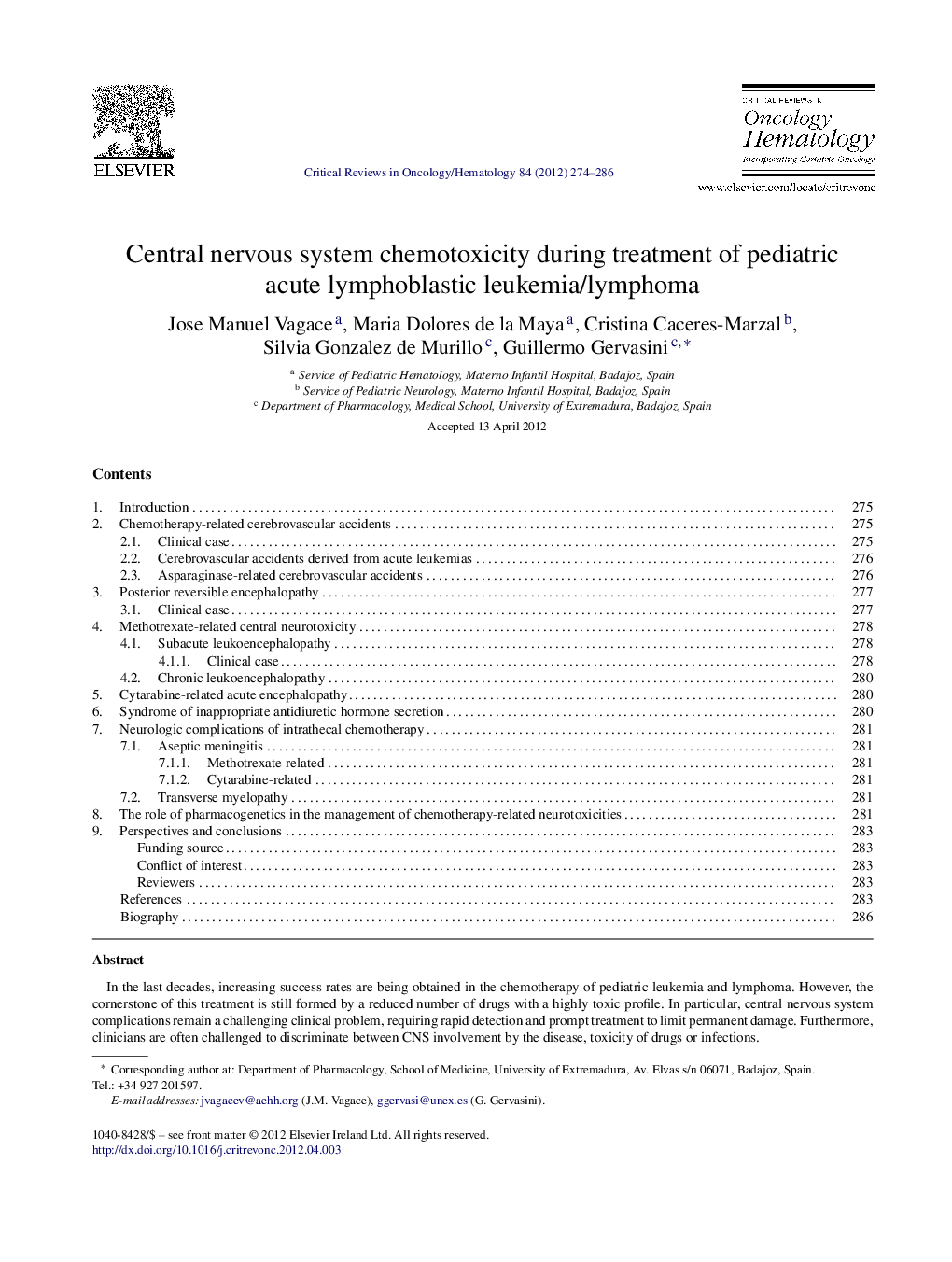| کد مقاله | کد نشریه | سال انتشار | مقاله انگلیسی | نسخه تمام متن |
|---|---|---|---|---|
| 3329012 | 1212369 | 2012 | 13 صفحه PDF | دانلود رایگان |

In the last decades, increasing success rates are being obtained in the chemotherapy of pediatric leukemia and lymphoma. However, the cornerstone of this treatment is still formed by a reduced number of drugs with a highly toxic profile. In particular, central nervous system complications remain a challenging clinical problem, requiring rapid detection and prompt treatment to limit permanent damage. Furthermore, clinicians are often challenged to discriminate between CNS involvement by the disease, toxicity of drugs or infections.This clinically oriented review will help recognize and handle the main neurologic adverse effects induced by chemotherapy in pediatric patients with lymphoblastic leukemia/lymphoma. Different clinical entities and putative drugs involved are discussed in each chapter, with clinical cases illustrating the most relevant and challenging events. In addition, specific clinical-radiological patterns of some of these neurologic events are detailed. Finally, the role of pharmacogenetics, with special focus on those polymorphisms that could help explain the occurrence of neurotoxicity, is also discussed.
Journal: Critical Reviews in Oncology/Hematology - Volume 84, Issue 2, November 2012, Pages 274–286